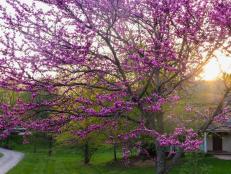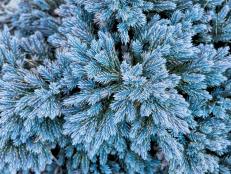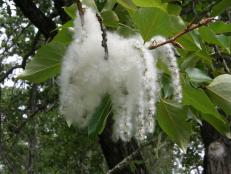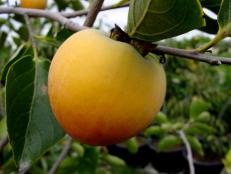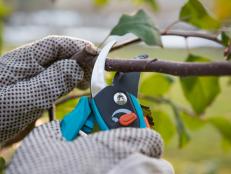What to Plant Under Trees
Find out all you need to know about underplanting from a garden expert.

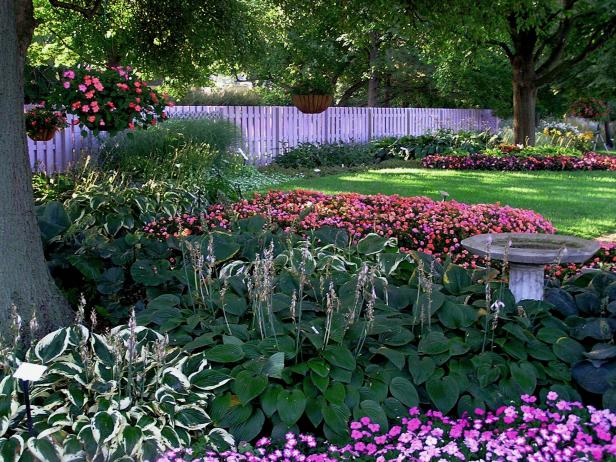
Photo by Felder Rushing
Pure misery: Woodland plants forced to grow out in the open in prairie settings.
One of the most unnatural yet common landscape practices is how landscapers and gardens plant individual trees in expanses of lawn. It flies in the face of how these communal plants prefer to grow – and it often stunts them for life.
It looks fine, of course, because we are used to it. But truth is, trees, understory shade plants, and woodland flowers and groundcovers, grow very well together – and can look great. It’s absolutely natural to underplant large shrubs and trees with other stuff, and is usually easier to care for.
Not only will the combination of plants look fantastic, especially if you plant for all seasons, but also it will make for an easier place to rake or blow fallen tree leaves every autumn.
What to Plant Beneath Trees
Every area of the country has its favorite shade-loving plants, both native and imported; your local Extension office will have lists and recommendations for great starter plants that do well in your area. Note that a few may be considered invasive in some states.
Some of the more popular shade- and root-tolerant woodland plants include understory shrubs such as oakleaf hydrangea, azaleas, euonymus, variegated aucuba, soft-tip yucca, nandina, many hollies, mahonia, and spirea. These generally do very well, as you can see from a drive around any older, established neighborhoods.
You will also see lots of great “starter” shade perennials to start with such as hellebores, liriope, trillium, variegated hakonechloa grass, aspidistra, Solomon seal, cyclamen, wild ginger, an incredible selection of both summer and evergreen ferns, bits of moss, and native phlox, columbine, dicentra, epimedium, tiarella, and heucheras.
In warm climates where northern mainstay hostas and astilbe don’t thrive, substitute small tropical gingers and groundcover bromeliads. And even if some iris may not get enough sun to flower as well as you’d like, most have fantastic foliage for an all-important contrasting texture effect.
There are too many good groundcovers for shade to even start listing here, but keep in mind that their very nature means they tend to spread aggressively, so “interview” them by noting in older gardens how they look before deciding if they are good fits for your own garden.
And be sure to leave a few pockets of good soil for tucking in season shade annuals such as caladiums, impatiens, salvias, coleus, violas, asparagus fern, and begonias.
Getting Started
To get understory plants started well, you need to do as good a job of soil preparation as possible, particularly under older, shallow-rooted trees where soil is typically poor and dry, and set out smaller plants that have the best chance of getting established quickly.
I agree entirely with my friends at the National Gardening Association that you should not pile a lot of fresh dirt over the roots directly beneath mature trees, which can suffocate the important, shallow “feeder” roots. No more than two or three inches of new soil should be hauled in, and even that should be worked into the existing soil, digging gently between older main roots close to trunks. And avoid piling soil up on tree trunks, which can lead to decay.
After planting, cover the area with a thick layer of natural, easily-compostable mulch such as chopped tree leaves or bark. More than just making things look neater, this will help keep roots of tender new plants moist longer, and as it naturally composts it will “feed” the worms in the area which in turn will burrow down deep between roots, making great natural paths for air, water, and roots to grow deeper.
Finally, don’t turn the area into a swamp with daily watering, but do water deeply and as frequently as needed the first summer or two. And wait until the second year to start pushing new plants with fertilizer – let them get established in the roots before loading them up with a lot of top growth.
Don’t Overlook Hard Features
It is especially hard to get a lot of color going under trees, at least all year. This is when a nice “hard” touch – something eye-catching if not downright artsy – can shine.
Easiest thing to start with is some sort of edging, like bricks, rocks, colorful glass wine bottles stuck neck-down, or even short sections of fallen tree limbs.
Most folks will add a nice statue or sculpture, or a striking birdbath or bench. Maybe something contemporary or whimsical, or even a naturalistic touch with a large stone or large interesting piece of old, moss-covered wood. But it can make the area really stand out, all year.
Save Young Trees
Mulching or planting underneath young trees is especially important, as it can help protect tender trunks from mower and string trimmer damage. Called “lawn mower blight” this is one of the leading causes of young tree stunting or outright death as it girdles the trunks, preventing plant food from moving down into roots and opening up the inner trunks to insects and wood decay fungi.
Plus, covering the soil under new trees with anything other than grass helps roots get better established, growing into soil conditions more similar to what is found naturally in woods.
Main thing is, planting groups of shade- and root-tolerant plants, tied together with soil-feeding mulch, and with a little artistic feature, will turn an otherwise barren area under trees into a lush wonderland.








